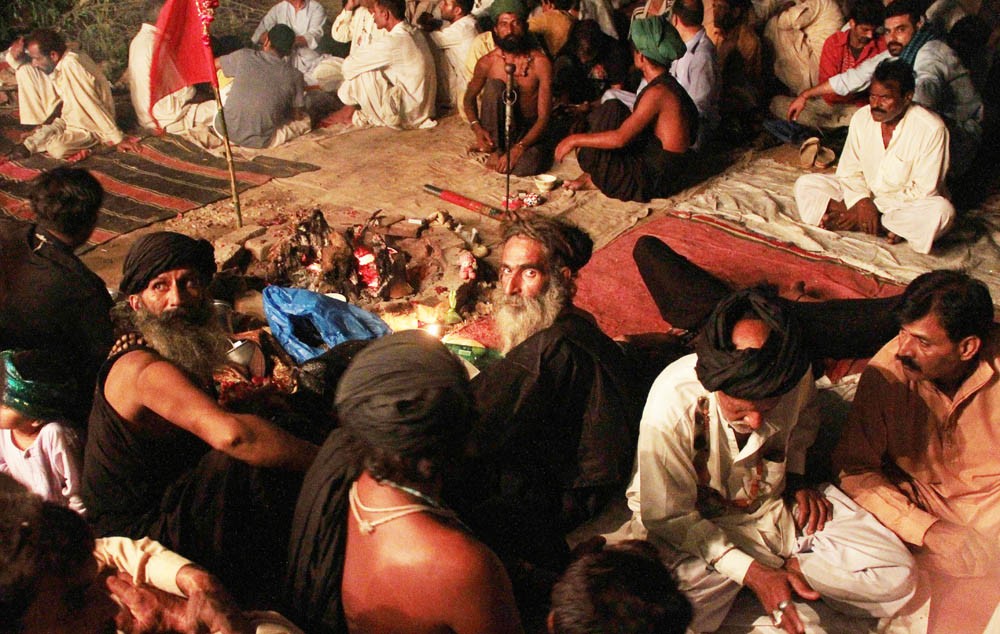
They say of Bullah that the rulers of Kasur at the time of his death denied his burial in the city. Today, the city itself has moved to his final place of rest

There is a neem tree, whose trunk twists and coils like a courtesan dancing to a lute, which stands proudly in front of the shrine of Baba Bulleh Shah.
Unlike a handmaiden with youth in her cheeks and a storm in her eyes, this tree is wrinkled and old, like an old concubine whose best years are behind her. Its leaves have flown away at the first hint of a mild winter and are now scattered under the carts of the many fish vendors on the stingy streets outside the shrine.
Like an ancient whore who has lost the ability to provide relief to the temerity of the youth that flock to it, so barren are its branches that it refuses to provide shade. Perhaps it too, like the devotees that lounge around on the cool marble veranda in the midst of which the tree stands, is there to seek penance of Bulleh Shah. One wonders at the sins that must have taken place under its shade in the heyday of its youth?
They say of Bullah that the rulers of Kasur at the time of his death in 1757 denied his burial in the city. Today, the city itself has moved to his final place of rest. Now with the construction of signal-free roads along Metro Bus and the Lahore-Kasur Highway beyond, one can leave from the Mall and be at the door of the shrine in forty minutes.
The uninterrupted passage gives a false sense of comfort. No sooner does one enter Old Kasur that it becomes hard even for pedestrians to navigate the narrow streets leading to the Darbar.
While avoiding rickshaws, motorcycles and Pajeros alike, I was guided to my destination by the scent of incense whose redolence emanated from the shrine. Sometimes having to tiptoe over a concrete slab lying over an open drain on the edge of the street, at other points having to pivot around the standstill traffic to cross the road, the path provided many an obstacle.
Having worked an appetite, the roadside dhabas that were deep-frying fish straight from the Sutlej River nearby, proved to be an irresistible distraction. My sister and I, two somewhat weary travellers by then, had our fill with some exceedingly spicy machhi at a most interesting roadside joint where the seating booths were covered with curtains (one would assume to maintain purdah). Upon insistence we sat outside so as to better observe the comings and goings of devotees and mohalla-wallas alike.
Once inside, men greeted us with harmoniums singing the kalaam of Bulleh Shah, while overturned caps that acted as begging bowls lay before them. These were not quite the ascetics one would have expected, though further in to the airy complex dervishes with green tunics and jingling ghungroos on their ankles were commonplace.
Just outside the mausoleum a young man, seated amidst a group of ten, sang with the accompaniment of a tabla and open-palmed claps from his companions. That the verses were in Urdu gave away far more than he would have liked, though one cannot doubt the sincerity with which he sang even if his choice of language was errant.
A throng of women sat facing a marble lattice wall, tying strings in the hope of a better tomorrow. A few moans of contrived sentimentality too could be heard from that particular quarter. Inside the men held up their hands in mostly reverent adoration, many of them young enough to be unwed. Surely some of them must have wished for a speedy marriage -- an ironic request considering Bullah breathed his last as a bachelor.
And outside an unnoticed neem tree observed them all. From its gaze it saw the families that were there to picnic in the afternoon with tiny boys wearing tawdry brown and silver three-piece suits, as well as the teenage boys wearing hoodies surreptitiously eyeing the women present.
The neem tree saw without discrimination the ladies with tailored shirts of printed lawn and muslin dupattas to cover their heads, as well as the hardened mothers carrying children with kohl blackened eyes and black strings of enchantment tied to their indigent arms.
And though every new age brings with it a unique set of day-to-day problems brought to the door of the shrine, the neem tree saw in all present a mixture of grief and hope. Perhaps that remains a constant between generations lost to time and ours. Only the ever-observant neem tree will know for sure.